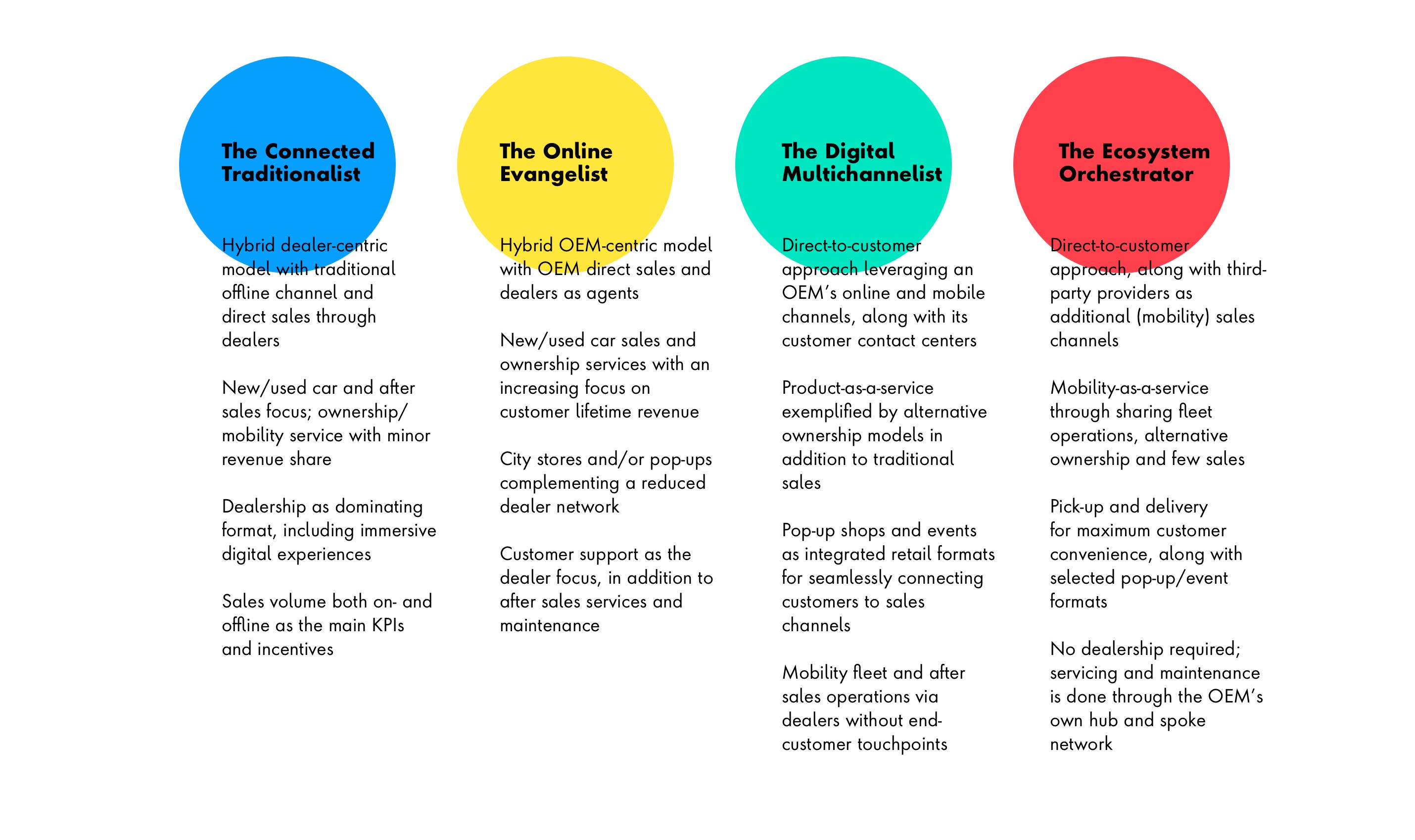Sales Channels: On the one hand, sales channels must be evaluated for their feasibility and profitability. Options include a more traditional business-to-business-to-customer model like today’s dealer network (perhaps with a few updates), a hybrid solution combining selling directly to customers online and via dealers offline, and a multichannel ecosystem built upon third-party partners.
Offering: The next step involves an OEM’s or NSC’s chosen combination of product and service offerings. New and used car sales can remain the base, or modifications can be made to accommodate aftersales, ownership services and even product-as-a-service options.
Network Formats: Then, there are alternatives outside of an OEM’s or NSC’s walls that need to be weighed and selected. Revamped network structures and formats are popping up left and right, swaying from centralized superstores all the way to decentralized pop-up events or a lack of brick and mortar all together.
Dealer Network Management: The OEM/NSC has choices in how to include (or not include) the dealer in its future business model. Will the relationship continue to be based on sales volume and auto incentives, will it be more about agents available only for customer support or will the dealership become unnecessary?
Any combination of these options can fuel an OEM’s/NSC’s business moving forward (see Figure 2). This is especially true when the business model is coupled with a strong data and analytics platform that allows for shared customer management across partners. Of course, that comes down to leadership and culture – both internal and across networks – and the relationships that stand to make or break a future-state model. Identifying where they want their business to be in several years is one thing, but an OEM’s/NSC’s C-suite must then stand up the organizational pillars necessary to drive that change.




















